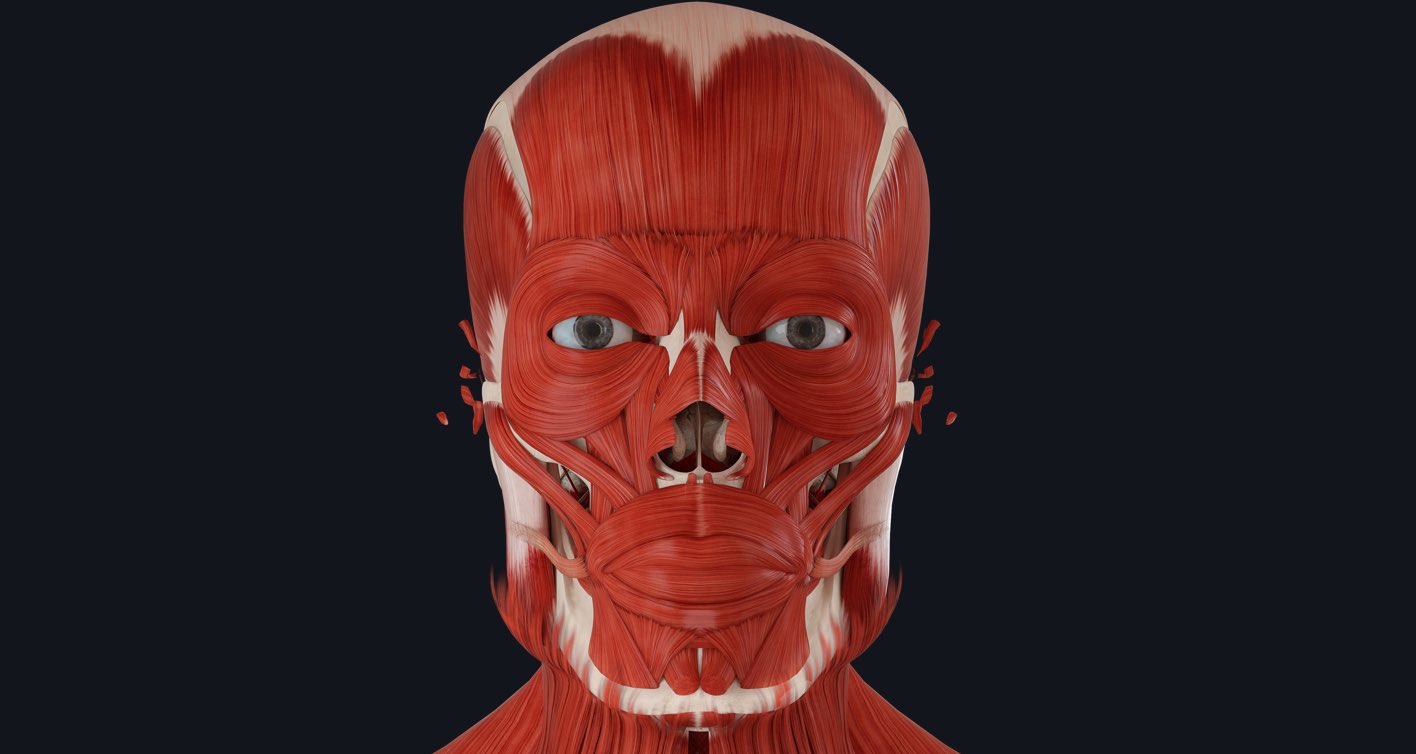
Did you know humans are capable of making 10,000 unique facial expressions ????! In the 1960s, American psychologist Paul Ekman disproved theories that human expressions were learned. Instead, he showed that our facial expressions are innate and universal. Let’s take a closer look at muscles that are responsible for facial expressions…
The facial muscles are the only group of muscles that insert into the skin. They are located in the subcutaneous tissue, originating from bone or fascia. When contracting, the muscles pull on the skin and exert their effects ?.
This group of muscles comes from the same embryonic origin, the 2nd pharyngeal arch. Therefore, they share the same main source of innervation, the facial nerve.
We can split the facial muscles into the following 3 groups:
Orbital Group ?

Contains 3 muscles:
- Orbicularis Oculi- divided into 3 parts
-Palpebral- closes eyelid
-Lacrimal- tear drainage
-Orbital- closes eyelids - Corrugator Supercilii- posterior to orbicularis oculi, draws eyebrows together
- Occipitofrontalis- raises eyebrows
Nasal Group ?

Contains 3 muscles:
- Nasalis- divided into 2 parts
-Transverse- compresses the nares
-Alar- opens nares - Procerus- contraction pulls the eyebrows downward
- Depressor Septi Nasi- pulls nose inferiorly, opening the nares
Oral Group ?

Contains 12 muscles:
- Orbicularis Oris- purses lips
- Buccinator- pulls cheek inwards against teeth
- Platysma- draws corners of mouth downwards
- Other Oral Muscles- 2 groups that act on lips and mouth
– Lower group- contains depressor anguli oris, depressor labi inferioris and the mentalis.
– Upper group- contains risorius, zygomaticus major, zygomaticus minor, levator labii superioris, levator labii superioris alaeque nasi and levator anguli oris.
Facial nerve dysfunction can lead to one of these muscle groups becoming paralyzed. As a result, a patient could present with difficulty eating, sagging around mouth/cheeks, an inability to shut eye, or lower eyelid drooping (ectropion).
Discover the muscles of facial expression in our brand-new Head & Neck model, in addition to detailed connective tissues such as the superficial musculo-aponeurotic system. To supercharge your learning with the power of 3D today, try Complete Anatomy for FREE.
If you found this blog post useful, you might also enjoy learning about the intrinsic and extrinsic muscles of the tongue.
